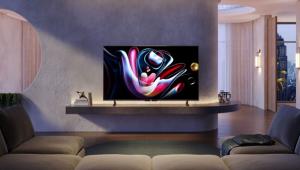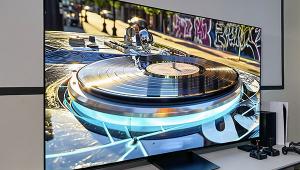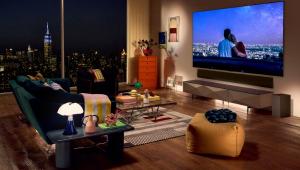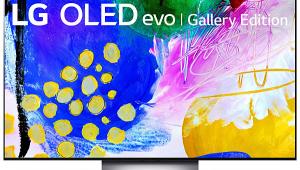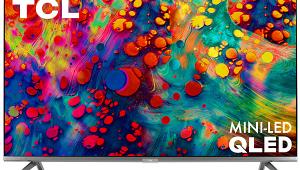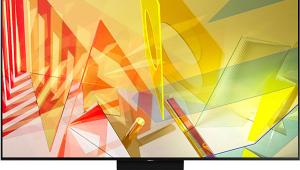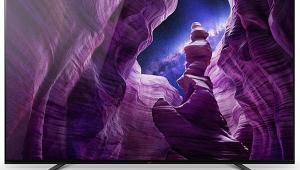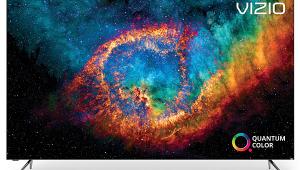Vizio PX75-G1 P-Series Quantum X LCD Ultra HDTV Review Test Bench
Full-On/Full-Off Contrast Ratio: Unmeasurable.
Measurements were made using CalMAN measurement software from Portrait Displays (www.portrait.com), together with Photo Research PR-650 and Klein K-10A color meters and a Fresco Six-G test pattern generator from Murideo/AVPro.
Vizio claims a peak brightness capability of 2,700 nits for the 75-inch P-Series Quantum X model (and 3,000 for the 65-inch version). That might be true for small and/or brief highlights on real HDR program material, but it was difficult to confirm since the set employs an aggressive automatic brightness limiter to prevent damage when left on in a peak output situation for more than a few seconds. While we measured 2,000 peak nits, as noted, that was more than sufficient to produce the most impressive HDR I've yet seen on a consumer display with real program material.
HD/SDR
In the Calibrated Dark picture mode, the SDR settings were configured to produce a peak white level of 144 nits (42 footlamberts). Black level with the Active Full Array local dimming on Low was unmeasurable.
In the Normal Color Temperature setting at this brightness level, the pre-calibration grayscale Delta E gradually increased from a low of 2.54 at 20% to 5.65 at 100%. Post-calibration, using both the 2-point and 11-point white balance controls, the maximum Delta E never exceeded 1.9, at 100%.
The maximum color gamut Delta E was 3.29 (cyan) before calibration and 2.7 (blue) after. The 2.4 setting of the Gamma control perfectly tracked the BT.1886 standard (2.4 and BT.1886 are close to identical), though 2.2 or even 2.1 worked better with some source material.
An SDR Saturation sweep produced an average Delta E of 1.04 and a maximum of 2.77 (the latter in blue at 100% saturation). An HDR Color Checker test, which measures dozens of widely used colors and not just the primaries and secondaries (red, green, blue, cyan, magenta, yellow) produced an average Delta E of 1.1 and a maximum of 2.7, the latter at 100% blue.
(Delta E is a figure of merit indicating how close the color comes to the D65 HD standard at each point in the brightness range. Values below 3—some experts allow for 4—are generally considered visually indistinguishable from ideal.)
Using the Leo Bodnar image lag detector, the Vizio in its Calibrated Dark Picture Mode had a lag time of 100ms with the Game Low Latency mode turned off and 25.7ms with it on. In the Game mode, the lag was 81ms with Game Low Latency off and an excellent 16.3ms with Low Latency on.
Ultra HD/HDR
Full On/Full Off Contrast Ratio: 782,642:1
In the Calibrated Dark Picture Mode, the measured peak white level with a 10% white window was 2,074 nits and the black level 0.00265 nits for the measured full on/full off contrast ratio shown above. At a gamma setting of 2.4 the Vizio's EOTF curve follows the standard as closely as any HDR set we've yet measured, though a 2.2 setting proved better at preventing black crush.
The pre-calibration white balance Delta Es of the Vizio reached a maximum of 7.9 at 100%. Post-calibration using only the 2-step controls, the maximum was 2.63 at 80%.
The pre-calibration color DeltaE for HDR measured a low of 1.7 in yellow and a maximum of 7.5 in green. While use of the color management system adjustments improved these numbers significantly, this required extreme settings of the CMS controls, so I chose to proceed without CMS corrections. A color checker analysis without the CMS showed a post calibration average DeltaE of 2.1 and a maximum of 6.3 (at 100% cyan). Non-100% Cyan was 4.7, green 4.2, and all other color DeltaE's were below 4.0. A DCI-P3 post calibration saturation sweep was fair, deviating the most in cyan as the color checker test suggested. The PX75-G1 achieved 83.9% of BT.2020 and 97.6% of P3 (1976 standard).
HDR luminance measured 1,000 nits with a 2% white window. A 10% white window measured 2,000 nits, a 25% window 1,800 nits, and a full 100% white window 600 nits.
The Vizio passed most of our standard video tests (upconversion from 1080i to 4K at 2160p) with no issues. The 3:2 HD test was borderline, failing only because it didn't match the upconversion performance of an Oppo UDP-203 Ultra HD Blu-ray player.


